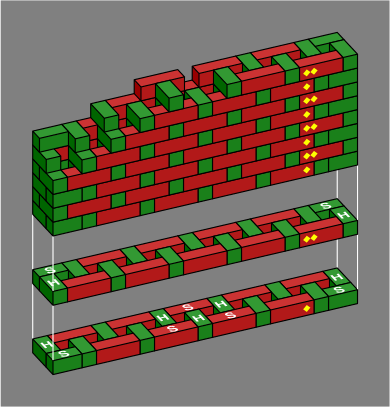
Section 8. Most factories that sell a long brick (12in × 4in × 4in ≈ 300mm × 100mm × 100mm) also make a short brick of two-thirds that length (8in × 4in × 4in ≈ 200mm × 100mm × 100mm). Mixing long and short bricks offers the designer great flexibility, in particular allowing an implementation of Quetta bond that does not require that bricks be cut at ells, tees and crossings. In external appearance, Quetta bond looks very much like Flemish, although their internal structures are quite different.
In the following diagrams, red signifies a long brick and green a short. Blue bricks, used vertically, might be long or short.
Figures 8A and 8B are two walls in Quetta that are the same except at the ends; 8A has one header at each end of each course, and 8B has two.
| Figure 8A |  |
|---|
| Figure 8B | 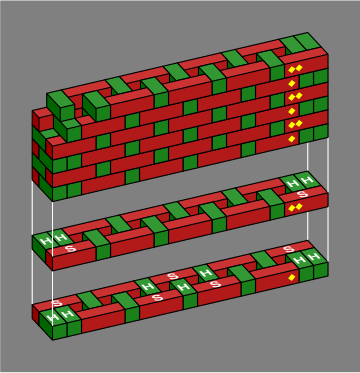 |
|---|
A wall can have any length that is a multiple of 4in ≈ 100mm:
Quetta bond was devised to have vertical voids which could be filled with reinforcing rods and grout. Figures 8C shows in overhead view walls with single-header and double-header ends. The voids are in white.
| Figure 8C compare figure 2B | 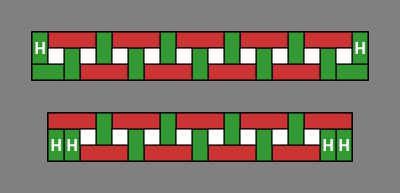 |
One might instead choose vertical bricks to fill the voids:
| Figure 8D compare figure 2C | 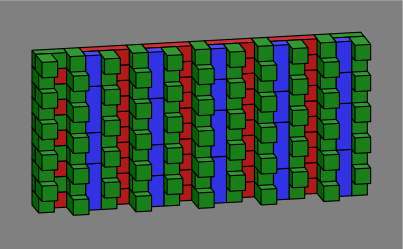 |
Here is a five-wythe wall with a single end on the left and a double on the right:
| Figure 8E | 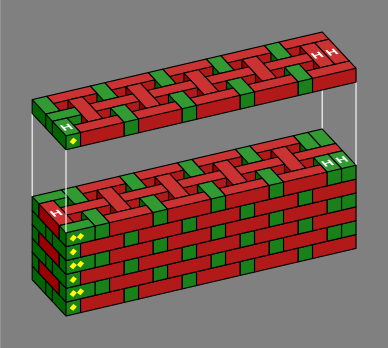 |
|---|
Section 9. Ells and shifts are easy:
| Figure 9A compare figure 3A | 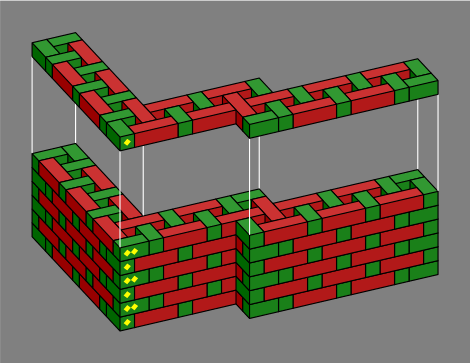 |
If short bricks in two colors are available, decorative patterns are possible:
| Figure 9B | 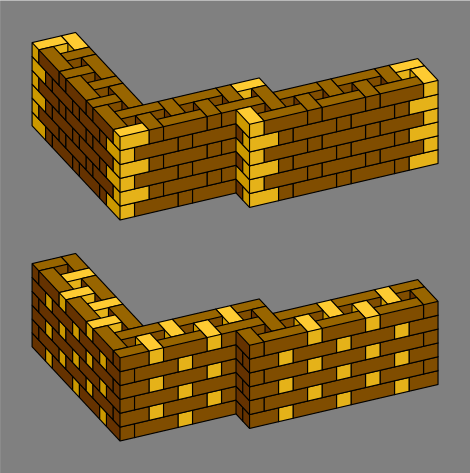 |
|---|
Exterior corners can be chamfered:
| Figure 9C | 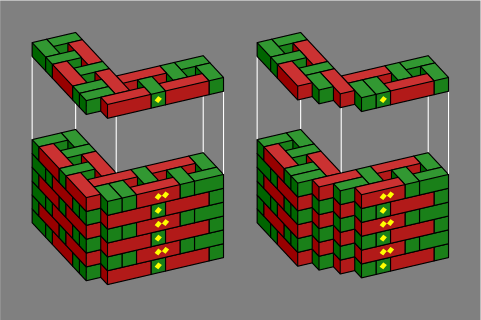 |
|---|
Tees and crossings are no problem:
| Figure 9D compare figure 3B | 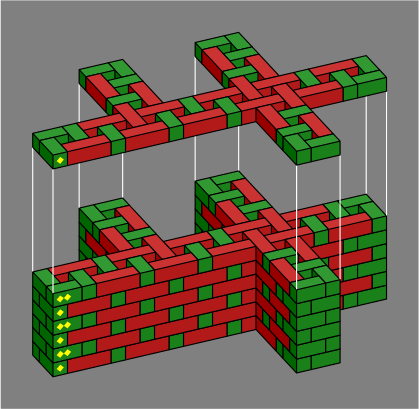 |
Offset crossings also work:
| Figure 9E compare figure 3C | 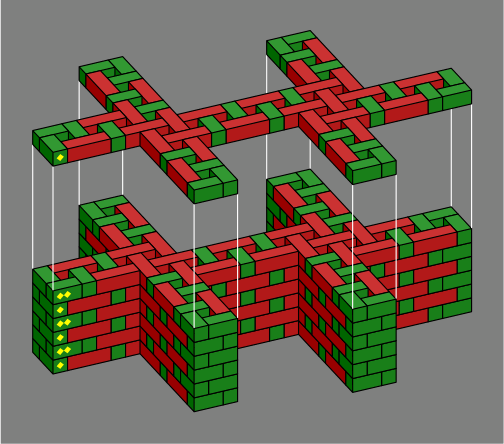 |
Here is another crossing with walls in both directions are offset; it has no counterpart in long-brick Flemish bond:
| Figure 9F compare figure 3D | 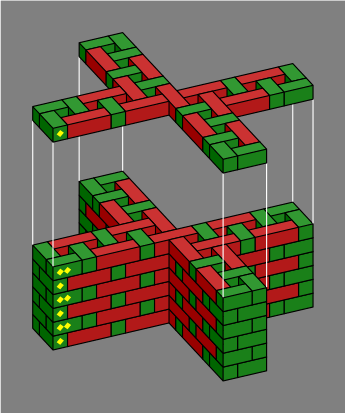 |
| Figure 10A
compare figure 4A and figure 4B | 1 | 2 | 3 | 4 |
|---|---|---|---|---|
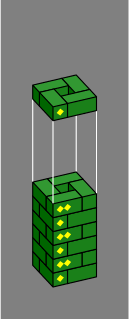
| 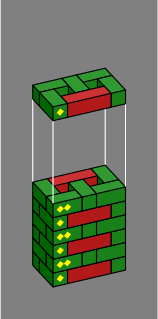
| 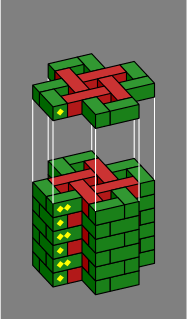
| 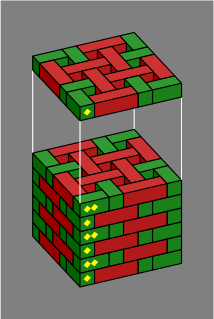
|
| Figure 10B
compare figure 4C and figure 4D | 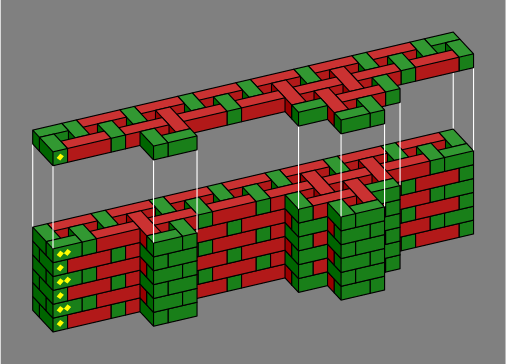
|
Section 11. Structural support for bricks spanning openings in a Quetta bond wall is the same as for any other wall; see section 5. Illustrations below omit upper courses to give an unobstructed view of the bricks next to a gap. Ends of the walls are left unfinished to emphasize that the choice of single or double headers at the end of the wall is independent of the choice at the opening.
If an opening has a width that is a multiple of 4in ≈ 100mm but not 8in ≈ 200mm, then there will be single headers on both sides of the opening, or double headers on both. Two phasings are possible:
| Figure 11A | 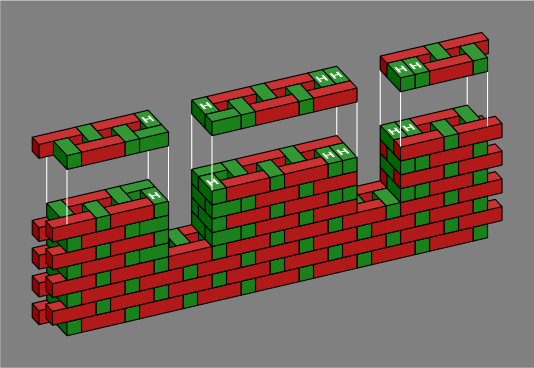 |
|---|
If instead an opening has a width that is a multiple of 8in ≈ 200mm, there will be single headers on one side, and doubles on the other. Only one phasing arrangement occurs:
| Figure 11B | 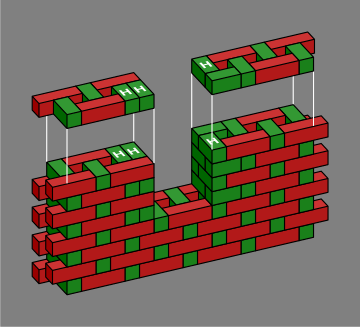 |
|---|
Section 12. Figure 12A shows a Quetta-bond wall equivalent to the Flemish-bond wall of section 6. As in figure 8C, rendered in white are voids where reinforcement can be added.
| Figure 12A compare figure 6A | 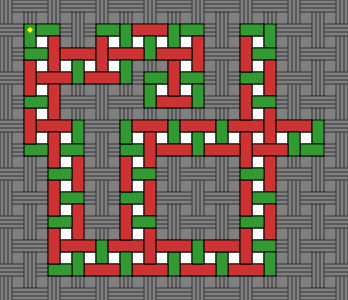
| 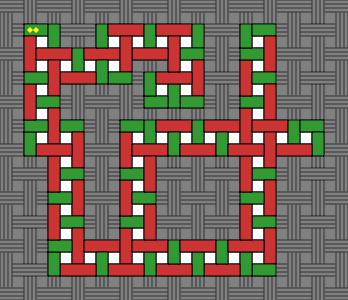 |
Figure 12B contrasts equivalent segments of wall in Flemish and Quetta bond, and how the phasing basketweave differs in its placement.
| Figure 12B | Flemish | 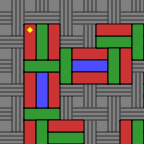
| 
|
|---|---|---|---|
| Quetta | 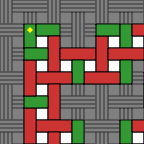
| 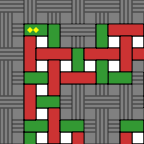
|